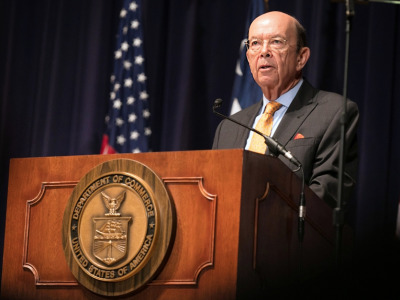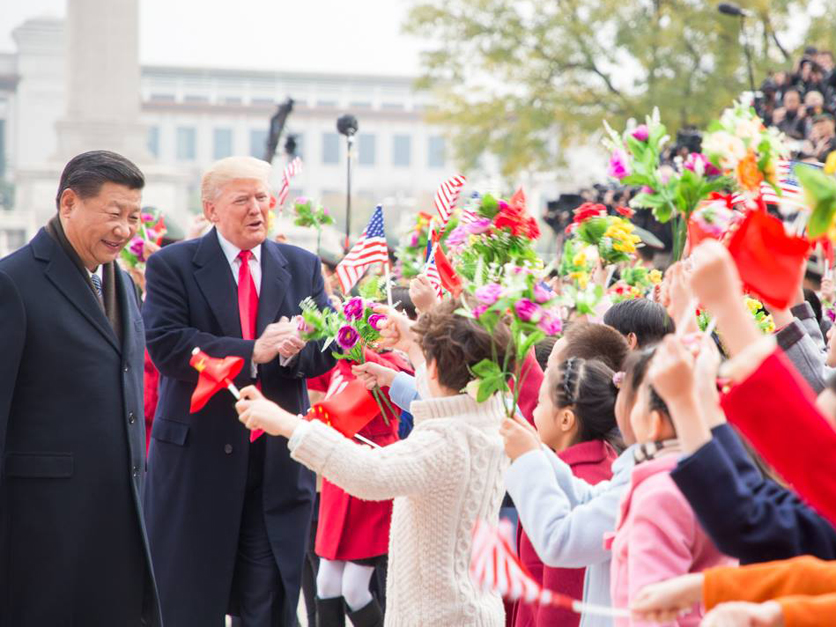U.S. farmers and ranchers have a lot to gain from the ongoing trade talks with China, but even more to lose if the two countries cannot come to an agreement on protecting U.S. intellectual property.
The potential gains for the U.S. ag industry – access to China’s rice market to name one – took a step closer to realization last weekend in Beijing where negotiators met for the third time in recent weeks. Chinese officials tentatively agreed to much of what the U.S. was asking for in terms of ag trade, government sources told Agri-Pulse.
U.S. negotiators aimed to reduce the United States' $375.2 billion trade deficit with China "by facilitating the supply of agricultural and energy products to meet China's growing consumption needs," the White House said in a statement.
But Chinese officials also stressed that none of those negotiating-room gains will be agreed to if the Trump administration follows through with its renewed threat to hit China with $50 billion in new tariffs as punishment for seizing U.S. intellectual property.
"Reform and opening-up as well as expanding domestic demand are China's national strategies,” the Chinese government said in a statement after the latest trade talks. "All economic and trade outcomes of the talks will not take effect if the US side imposes any trade sanctions including raising tariffs."
There’s also a Chinese stick to go along with the carrot of increased trade. China is threatening $50 billion worth of retaliatory tariffs that feature a new 25 percent tax on U.S. soybeans. Just the threat of that tariff has been driving Chinese livestock companies to shift to imports of Brazilian soybeans.
The Trump administration has already vowed China will agree to measures, allowing U.S. ag exports to the country to more than double the current $20 billion in annual sales, but the White House has also shown it is intent on getting the Chinese to stop going after U.S. technological secrets.
U.S. lawmakers and farm groups fired off letters to the Trump administration last Friday as Commerce Secretary Wilbur Ross led the U.S. trade delegation to Beijing. Continue to go after China, they beseeched the administration, but don’t hurt U.S. business in the process.

Commerce Secretary Wilbur Ross
Thirty four House Republicans and Democrats signed off on a letter to U.S. Trade Representative Robert Lighthizer, saying: “We appreciate your commitment to addressing unfair trade practices by the government of China, however we urge you to do everything possible to address these problems without closing markets, imposing tariffs or enacting other government regulations that might harm large numbers of U.S. workers, consumers, businesses, farmers and ranchers.”
Meanwhile, some of the largest and most influential ag groups wrote directly to President Donald Trump, pressing him on his promise to get China to increase agricultural imports.
“There is no doubt that your administration has the attention of China and that you should seize this opportunity to achieve long-term benefits for U.S. farmers, while preventing China from moving the goalposts once again or imposing tariffs that result in more, rather than fewer, barriers to U.S. agricultural exports,” the American Farm Bureau Federation, American Soybean Association, National Corn Growers Association, USA Rice Federation, United Fresh Produce Association, U.S. Wheat Associates and others wrote in the letter.
And the U.S. doesn’t have to take on China alone. The European Union shares U.S. concerns about Chinese policies that try to force U.S. companies to turn over trade secrets in return for market access.
“The EU shares both the concerns expressed by the US and the description of the problem regarding China's technology transfer policies,” the bloc of 28 countries said during a recent World Trade Organization dispute body hearing. “Foreign ownership restrictions, opaque administrative procedures, vague and unclear rules that leave discretionary leeway to the administration, discriminatory laws and practices, lack of transparency and consistency, are all elements that create the conditions for the Chinese government and State-influenced actors to pressure foreign companies to transfer their technology to Chinese entities.”
The EU may not still want to help the U.S., though. That statement came before the U.S. slapped a 25 percent tariff on European steel and a 10 percent tariff on aluminum. Now the EU is preparing to retaliate with tariffs of its own on U.S. exports – including ag products like rice, kidney beans, orange juice, cranberries and sweet corn.
There’s still an opportunity for the U.S. and China to put an end to the tariff threats and increase trade, American Farm Bureau Federation Senior Director David Salmonsen told Agri-Pulse. The U.S. is scheduled to publish a list of Chinese products for the $50 billion in tariffs on June 15, less than 10 days from now, but it’s unclear when or if they will be implemented.
“Once they come out with the list, then they would be in a position to impose tariffs,” Salmonsen said. “Whether they do it right away or not, we don’t know yet. There’s still time for talk. It’s a very fluid situation.”
For more news, go to www.Agri-Pulse.com


